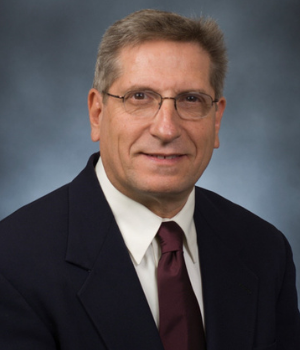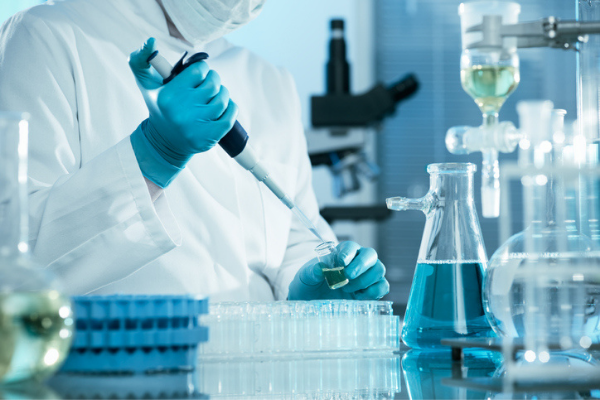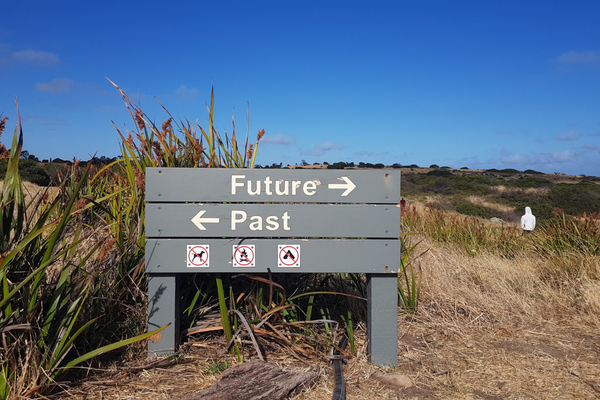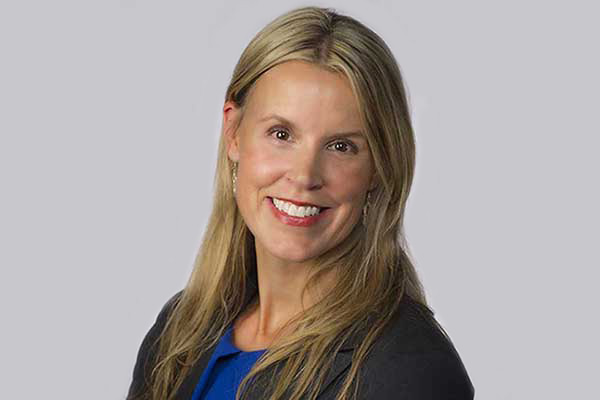
Dimi Katsoulis joined Dow in 1988 after receiving a PhD from Georgetown University in inorganic chemistry. He is a principal research fellow at Dow Performance Silicones, supporting corporate growth by developing sustainable new technology platforms in silicones and silicone-organic hybrid materials.
During his 33-year career with Dow, Dr. Katsoulis has served as:
- satellite leader of Central R&D group in Yamakita, Japan
- principal investigator in cooperative research and development agreement projects with NIST, FAA, US Navy, and the Air Force Office of Scientific Research
- interim director of the Polymer and the Solid-State Program at NSF
- member of Dow Corning’s Technical Advisory Board
His areas of technical expertise include metal oxides, silicone resin science and resin design, sol-gel chemistry, composites, and films. And his current research focus is in homogenous and heterogeneous catalysis, synthesis, and processing of organosilanes. Dr. Katsoulis has been granted 64 US patents and has published 77 peer reviewed articles. He is Fellows of ACS (2021) and AAAS (2018), as well as a member of NAE (2017).
Your story is one of taking a very fundamental approach to understanding a technical issue and using that understanding to create very successful products. Many industrial scientists feel they can’t invest the time to gain fundamental understanding. What advice do you have for early career professionals regarding fundamental studies?
When it comes to making products, the fundamental approach to understanding technical issues ensures sustainable competitive advantage.
In an industrial environment where the bottom line is the generation of value via sales of products, it is imperative to have in-depth understanding of the inter-relationships of performance (of the product in the application), to the properties of the material(s) (in the product), to the structure and composition of the components, and the process required to generate the product.
Achieving understanding of these relationships requires investment of time and focus on the fundamentals. Even if one is first in the market with a successful product, the competition will attempt to enter quickly by identifying gaps in the technology, which are usually reflected in the patent claims. The concepts of “new and improved” or “differentiation” can only be achieved when good science and technology support the product line. Patent claims will be much more insightful and difficult to undermine.
Importantly, as well, by having a good grasp of the fundamentals, one gets early notice of the limitations of the product (or technology) and can devise a prudent change of course to continue to address market needs with new products (or different technologies). The fundamental studies must be directly coupled to a technology gap (need) that, when addressed successfully, removes barriers, which prevent entering and participation in the market application space.
For mature, and even for younger industries, two types of fundamentals must be pursued.
- Fundamentals that are foundational to the science and technology that the industry is based on. A healthy R&D organization will always maintain fundamental work on its foundational technologies. Early career professionals can learn very quickly from the senior technical leadership what the foundational technologies are for the company and the fundamental work that is needed to keep maintaining competitive advantage of the technology.
- Fundamentals that are specific to a technology or a product line. For these, the timing and the extent of fundamental studies depend on the specific technology and products. Early career professional should be paired with senior R&D personnel who have mature judgement of where fundamental understanding “connects” with the technology or the product to get advice and guidance for the work.
In some instances, products can be successfully launched via ‘an empirical approach, and the need for fundamental work appears soon after, and in other instances the technical gap has been identified and must be closed to allow for successful commercial success. One should always question what these gaps are and how impactful their resolution would be to the product success. As the experience of the professionals increases within the industry it becomes easier to make the judgement call and to prioritize where fundamental work should be funneled at any time to maximize the value and impact.
Can you describe a case where focusing on the fundamentals didn’t deliver the hoped-for results? How did you know when to call it quits? How did you manage the situation with the business leaders?
In my career, more commonly, I was faced with situations where focusing on the fundamentals revealed limitations or issues on the technology or the product concept that was pursued, and provided the justification for dropping (stopping) the particular approach and the project.
Some common reasons for calling it quits were the high cost of the approach or inferior performance when compared with competitive technologies and alternative approaches. Focusing on the fundamentals was very advantageous in these instances as it helped us “fail fast,” which is an important guiding principle in business. Naturally, technical and business leaders agreed about the output and the role of the fundamentals in these cases. The fundamental knowledge that was developed was captured and documented properly in the company’s reports.
Proper documentation is an essential and critical task. I have seen many times technical issues and analogous product concepts resurface, even many years later. And thus, I learned to appreciate this underexploited knowledge and frequently witnessed its utility at a later time.
In contrast, I have also witnessed circumstances where fundamental studies had weak or indirect association (links) to the technology and/or product to be developed. Then their value was marginal or non-existent. It is in these cases where senior technical leadership can provide early guidance through internal peer review to either strengthen the hypotheses or make the necessary course correction. The type of projects that come to mind and fall under this category are the Holy Grail type of projects, and those who focus on “model systems.” More often than not, practical reality is far away from these projects.
What about the inverse, where the business wanted to move on, but you remained convinced success was soon to come? Any advice on keeping a project alive when others are ready to abandon?
Everyone in industrial business knows that the R&D time window and the business time window differ. The latter is usually much shorter. The longer span of synchronization of these timelines, the more harmonious the business and technical relation is and the probability for success in the marketplace increases.
Healthy R&D organizations recognize upcoming technology trends and have the foresight to start technical work on the underlying science, so that it can be ready when business and customers come to them demanding solutions and products. In my career, I have experienced these situations. Sometimes we started R&D work way early and invested resources in fundamental and applied work, and then we had to stop when the business lost patience and was not willing to keep funding the work any longer.
The market came much later (in two instances, 20 plus years later). In one instance we were fortunate to have retained the expertise and knowledge, and we were able to restart with minimum penalties. In the second instance we almost had to start from the beginning, although we had all the prior knowledge documented internally. Things had taken a different trajectory.
I do not think there is a magic bullet as an answer for these circumstances. One has to make a call where one believes things are heading and take action. It is part of the risk and reward nature of the business. The only areas where there should be continuity of the fundamental work without disruption, as I mentioned above, are the areas of the foundational technologies, which are the core of the particular industry. It is the responsibility of the senior technical leaders to educate the business leaders of the value of these technologies and advocate for their ongoing investment.
The areas where you’ve ventured cover several different technology areas. I see catalysis, polymer design, and more. Many appear far removed from your thesis training. How do you approach a new problem in an area where you have limited knowledge?
Very frequently in industry, employees find themselves in scientific fields that are not within their “comfort zone.” Business growth relies increasingly on complex technologies, which command multidisciplinary approach and a variety of skills and expertise.
When I joined the company as an inorganic chemist to work on aluminum and zirconium metal oxides, I quickly realized that these were just a periphery technology for a company that was founded on silicon and siloxane chemistries. I realized at the time that I would quickly need to broaden my knowledge if I were to succeed in R&D. My feeling was proven correct, as three years after I joined, the aluminum-zirconium business was sold and the company maintained its core focus on silicon chemistry exclusively.
The dual nature of the siloxane polymer, PDMS, that of inorganic via the siloxane bonds, and the organic via the silicon-carbon bonds was an attractive and convenient bridge to expand from my original metal oxides comfort zone. I was also fortunate to be the last class of R&D professionals to interact directly and in-person with the original pioneer scientists who had developed the foundational technologies upon which the company was established. This strong silicone R&D environment became a school of continuous education for me. I became a devoted student of silicon chemistry, through continuous reading, association, and work with those scientists; readily accepting coaching, mentorship, and guidance; and attending every seminar and organosilicon meetings that I could.
In my experience with industrial R&D, there is minimum or no segregation of disciplines, knowledge, and skills. One works with whomever is needed for the work to succeed. From there on, it became easier to navigate in adjacent fields, and even new fields, by seeking to collaborate and work with those who were experts in these new fields. I needed to be willing to do my part in the collaboration and to obtain education to remain productive throughout the project.
Looking back, I can divide my career into about six or so 5+ year segments. I found each of them to be analogous to a PhD thesis. So, for those early in their career who find themselves in analogous situations, I would suggest viewing the new project as another PhD training and embrace it. It is well worthy, as it will add significantly into professional growth and will increase impact within the organization. I would like to conclude here by emphasizing that in my career as a chemist I found great benefit by direct collaborations with chemical engineers. In my experience, the nature of their training brings pragmatic questions to a project from the beginning.
Who are the mentors that influenced you, what made them good mentors, and how do you approach mentoring others?
The mentors who influenced me most were the first two R&D directors that I encountered when I joined the company, and an MIT professor with whom I collaborated during several of my early years. They took a genuine interest in me, my projects, but also on my personal life as a whole. They provided direct guidance regarding the research work, but also were direct to provide input, privately, when corrections were needed in my behavior to help me navigate within the organization.
It was critically important that they took action to remove obstacles and to back me up. They set up various “tests” (without me knowing at the time) by setting me up in different challenging situations to explore my strengths and determine my weaknesses. They were simultaneously working with me on my short- and long-term career goals.
They gave me advice on how to work with molecules and with people. The latter is more challenging, as everybody knows. They helped me understand the different types of communications when I was discussing technology with business people vs technical colleagues. They shared openly their experiences and issues and challenges that they faced during their careers.
In my current role I have been fortunate to work closely with young talented colleagues, and I take every opportunity to pass along many of the messages that I learned from my own mentors, share my own experiences, and show examples of how to do the work and how to communicate to maximize the company and personal impact.
It is important to also mention how much I benefit from the learnings I obtain from my younger colleagues—so-called reversed mentoring. They help me keep pace with the technological and social changes that are taking place during our times. It does work both ways.
How has your family influenced your leadership style?
During my upbringing, my family, a low middle-class family, instilled in me the principles of hard work, loyalty, integrity, and frankness. My own family today shows me patience, openness, and unconditional support. I do want to believe that these principles and behaviors are reflected in my work and in my interactions with my colleagues and others within the organization.
What is a lesson you’ve learned that you wished you knew from the start of your career?
The lesson I refer to here I learned early in my career. It relates to the old saying, “It is never too late.” During one of my first interactions with a customer, I remember that naively and maybe a bit self-importantly, I mentioned to a manager of the customer company that, “it is never too late to bring him a product solution.” (I thought I had the concept in my head and only needed time to execute.)
I vividly remember that he leaned toward me and with a stern voice corrected me: “In business, timing is everything.” This interaction has stuck with me, and I witnessed the reality of the statement many times during my career—not only its impact on business, but equally importantly, on technical work. Being either early or late can make a good technical contribution useless.
You worked for a company that was acquired. What were the challenges posed by that acquisition, and what led to your success navigating the transition?
I think that by its nature the R&D function offers advantages over other functions, for example, accounting or legal, in tempering some of the headwinds and the “sour taste” that always accompany these types of acquisitions. So, it is a matter of where one focuses and channels one’s energy.
For me, this acquisition opened the opportunity to get involved and explore new chemistry sets (the organic chemistry of Dow), build professional relationships and collaborations with a new set of colleagues, and take advantage of new and greater capabilities in the lab and instrumentation. Even more importantly, such situations have allowed me to identify the new intersections/synergies that emerge when various chemistry sets and supply chains, such as silicon and organic, are brought together.
I saw great potential in exploring these intersections, and I funneled a great deal of energy to learn and exploit this new space. Both companies can teach and learn from each other on business, science and technology, and eventually new products. As anyone in this business knows, chasing synergies results in bringing out the worst of both sides (making lemonade), but here is where the challenge becomes interesting: exploiting the non-obvious. So, almost six years after the acquisition, I find myself still enjoying my research and making meaningful contributions with new science, technologies, and products.
What is the one personality trait that has been most instrumental in your career success? What trait do you wish you had in greater supply?
I would start with curiosity as the driver to stick with a question/topic and to persevere and to work hard at it until the answer is found. This has helped me undertake challenging tasks and drive them to completion. On the other hand, I think more patience and a more tempered bias style would have been helpful to have in a greater supply.
You are most associated with silicones chemistry. What are the sustainability challenges silicones face and how do you think they’ll be addressed?
Silicon chemistry and engineering offer very valuable guiding principles toward the generation of sustainable products and solutions, as well as good options for recyclability of silicone materials. Silicone materials are used in thousands of applications, very frequently in small amounts and in conjunction with many other materials as mixtures or additives. This extensive penetration in all markets is the main challenge that I see on sustainability of silicones. One needs to be able to track the material throughout its useful lifetime, collect it, separate it from the other components, and go through the appropriate recycling or other utilization approaches via a cost effective and efficient manner. It is truly a serious challenge that we must tackle.
Silicones find application where more traditional polymers fail. What applications of silicones have most surprised you during your career, and what nascent applications are you most excited about?
I am still intrigued by one of the earliest applications of silicones: adhesives, sealants, and structural silicone glazing on building facades. Silicones have a unique combination of properties that ensure extensive longevity on building structures under severe conditions of wind and earthquakes.
These properties include great adhesion (with excellent transparency when needed) to substrates, excellent weather and temperature stability, fire resistance, ozone and oxidation resistance, extreme low-temperature flexibility, UV resistance, low reactivity, high gas permeability, and low water/liquid permeability. One can find numerous 40- and 50-year-old structures that are still in fine working conditions. In addition, spectacular designs of new skyscrapers can be made possible by use of silicone sealants and adhesives.
The new technologies that are currently emerging on energy, electrification, healthcare, transportation, and other areas offer new opportunities for silicon-based materials. In addition to numerous recent applications due to electric vehicles, I foresee new application opportunities on lightweight composite structures, taking advantage of the excellent fire-resistant properties of silicones. I also see applications on wearable electronics (smart e-textiles) and electroactive materials as well as applications based on the optoelectronic properties of nano-silicon and other inorganic silicon alloys and silicides.
As a native Greek, can you share an underappreciated destination in Greece that visitors should be sure to put on their itinerary?
I would suggest places on the mainland outside the main cities of Athens, Thessaloniki, and Patra. One will find thematic and cultural centers and the unique landscape of the mainland amenable to visitors throughout the year, not just the summer. Some examples are Halkidiki (Chalkidiki) peninsula, the Zagori villages on the mountainous northwest of the mainland, Pelion peninsula in the central part of the country, Plastiras Lake in the central mainland, the rock formation of Meteora, and the town of Arachova for winter holidays.
What is a place you can’t wait to get back to?
For me, there are two places that I would like to be able to visit again. They are completely different in lifestyle and culture, but each one has made a great impression on me. They are Paris and Tokyo. If I had to pick only one, it would be Paris.
This article has been edited for length and clarity. The opinions expressed in this article are the author's own and do not necessarily reflect the view of their employer or the American Chemical Society.













